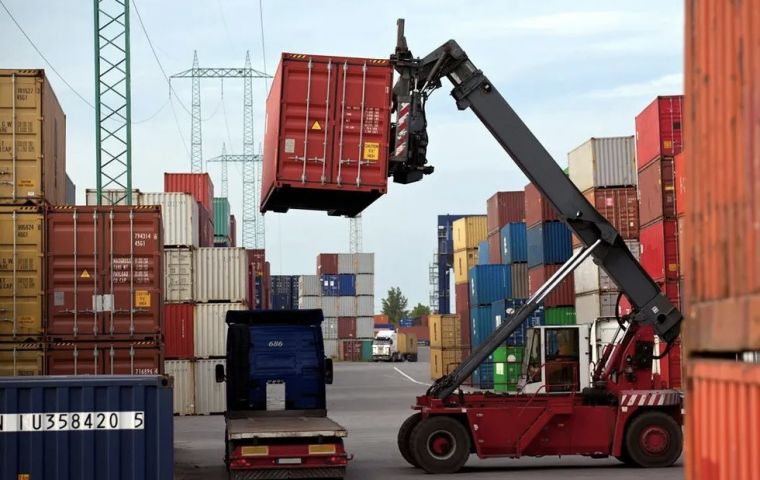MercoPress. South Atlantic News Agency
Argentina's foreign trade balance yields deficit in June
 The INDEC figures are the direct result of western sanctions against Russia, which drove the price of oil upwards
The INDEC figures are the direct result of western sanctions against Russia, which drove the price of oil upwards Argentina's foreign trade balance came out in the red in June of 2022 for the first time since 2018, it was reported in Buenos Aires by the National Institute of Statistics and Census (INDEC).
The deficit reached US$ 115 million when in addition to energy, imports of other items also went up in size and price. The report also did not take into account a strike in December of 2020 which also froze exports for a while.
The negative gap is largely explained by the increase in the purchase of hydrocarbons at higher prices due to shortages stemming from Western sanctions against Russia. The INDEC study also pointed out that had prices remained stable from June last year, Argentina would have recorded a US$ 224 million surplus. However, there was also a strong increase in the quantities imported in other items.
In June, net exports (exports minus imports) of the soybean complex had a surplus of US$ 2.058 billion, 144 million dollars higher than in the same period of the previous year. On the other hand, net energy exports showed a negative balance of 1.296 billion, 837 million dollars worse than in June 2021.
Imports increased 44.6 percent in June compared to the same month of the previous year, the additional US$ 2.638 billion stemming from a 26.4 % increase in prices and a 14.6 percent increase in quantities.
The item that rose the most was fuels and lubricants, (156 %) due to energy purchases to supply thermal power plants during the winter, which accounted for US$ 1.192 of the total US$ 2.638 billion worth of imports while the price of imported fuels rose 118.9 % last year, while quantities went up 19.6 %, which was believed to be tied to economic growth.
There were also increases in car imports, both in prices (11%) and quantities (39.3%), as well as in parts and accessories for capital goods and capital goods. In industrial goods, mostly diffused inputs, the 25.8 percent increase was almost entirely due to price increases.
Consumer goods, which are imports that are not essential to the production process, rose 23.3%, driven by higher quantities (12.7%) and by prices (9.4%).
Exports rose 20.3% when compared to the same month of 2021, boosted almost in its entirety by prices, which grew 20.7% while quantities stayed relatively the same (+0.4%).
Fuels and energy showed a combined 92.8 % increase (69.7 % in prices and 11.6 % quantities). The largest increase was recorded in crude oil.
Manufactured goods of agricultural origin went up 25.9 %, with 21.3 % resulting from price hikes while quantities rose 3.7 %. The largest increases were in fats and oils and meats and byproducts.
Industrial manufactures also went up 12.7 % while quantities rose by 4 percent. The largest increases were in vehicles and chemical byproducts. Regarding primary products, there was a 12.3 % drop in quantities.




Top Comments
Disclaimer & comment rulesCommenting for this story is now closed.
If you have a Facebook account, become a fan and comment on our Facebook Page!